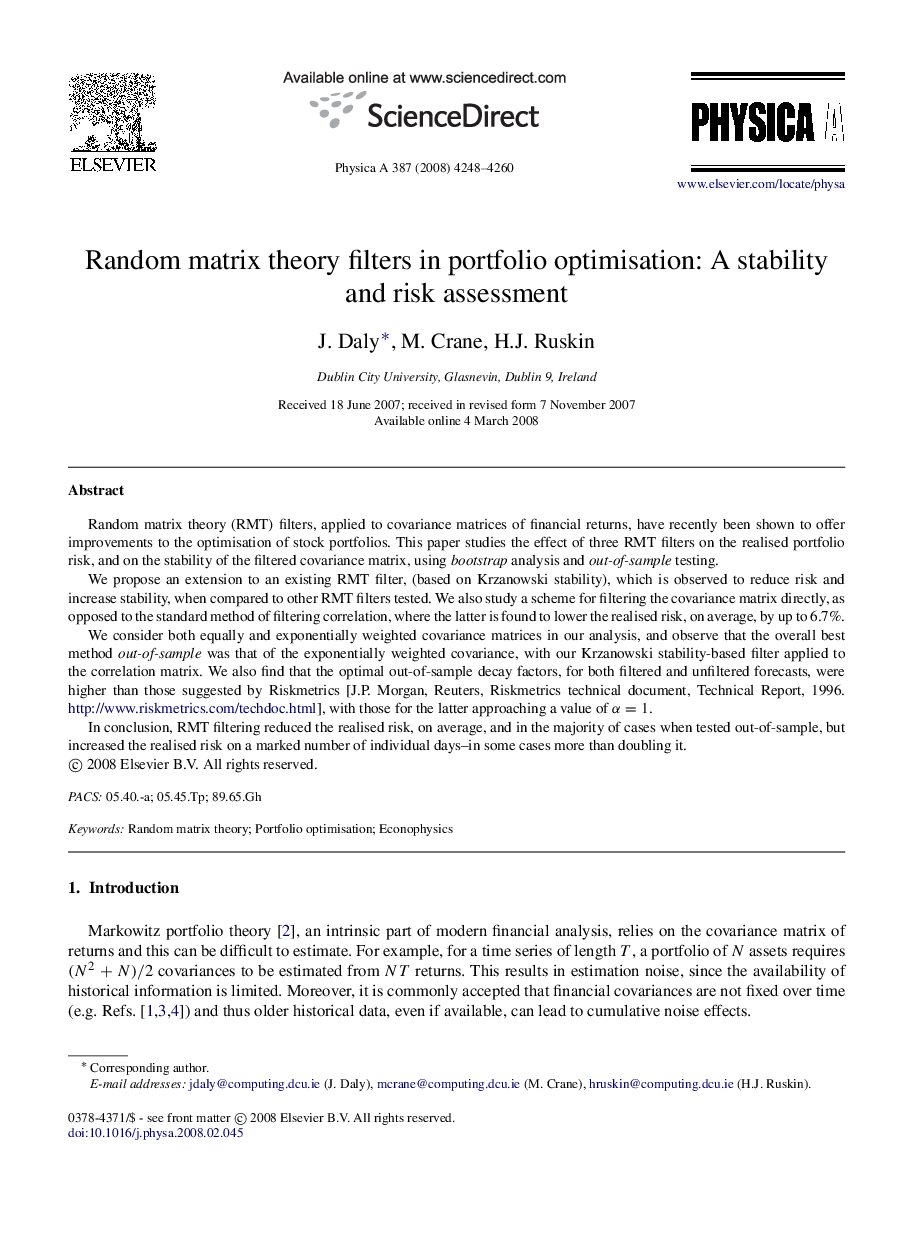| کد مقاله | کد نشریه | سال انتشار | مقاله انگلیسی | نسخه تمام متن |
|---|---|---|---|---|
| 977945 | 1480188 | 2008 | 13 صفحه PDF | دانلود رایگان |

Random matrix theory (RMT) filters, applied to covariance matrices of financial returns, have recently been shown to offer improvements to the optimisation of stock portfolios. This paper studies the effect of three RMT filters on the realised portfolio risk, and on the stability of the filtered covariance matrix, using bootstrap analysis and out-of-sample testing.We propose an extension to an existing RMT filter, (based on Krzanowski stability), which is observed to reduce risk and increase stability, when compared to other RMT filters tested. We also study a scheme for filtering the covariance matrix directly, as opposed to the standard method of filtering correlation, where the latter is found to lower the realised risk, on average, by up to 6.7%.We consider both equally and exponentially weighted covariance matrices in our analysis, and observe that the overall best method out-of-sample was that of the exponentially weighted covariance, with our Krzanowski stability-based filter applied to the correlation matrix. We also find that the optimal out-of-sample decay factors, for both filtered and unfiltered forecasts, were higher than those suggested by Riskmetrics [J.P. Morgan, Reuters, Riskmetrics technical document, Technical Report, 1996. http://www.riskmetrics.com/techdoc.html], with those for the latter approaching a value of α=1α=1.In conclusion, RMT filtering reduced the realised risk, on average, and in the majority of cases when tested out-of-sample, but increased the realised risk on a marked number of individual days–in some cases more than doubling it.
Journal: Physica A: Statistical Mechanics and its Applications - Volume 387, Issues 16–17, 1 July 2008, Pages 4248–4260